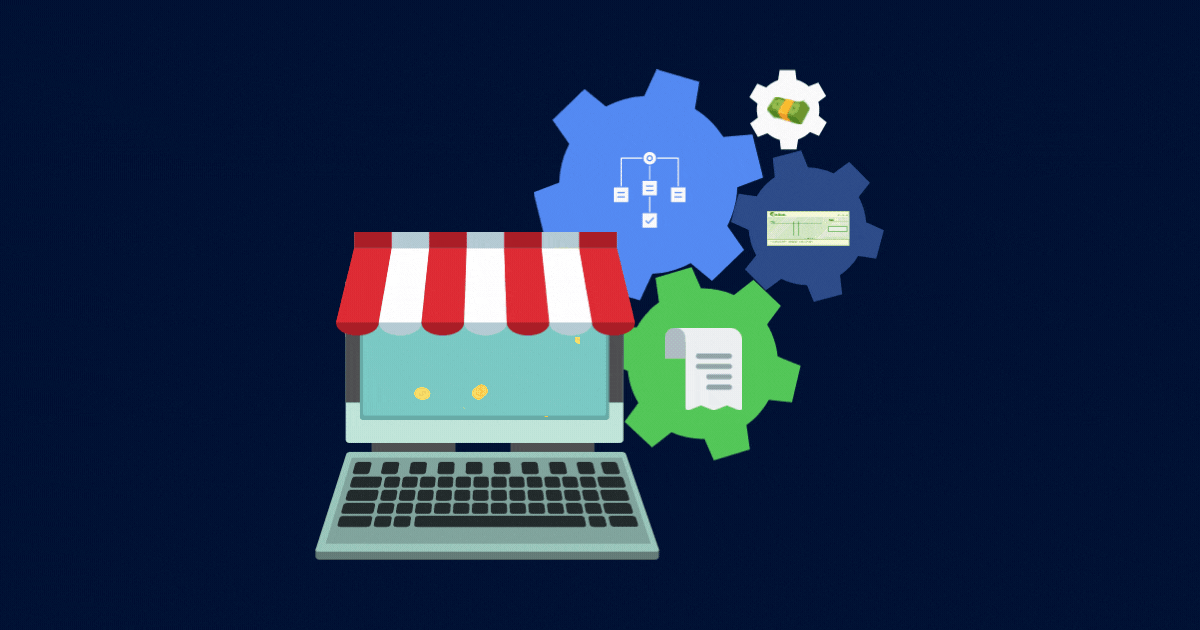
In today’s world with new technologies appearing daily to solve simple tasks it can become tempting to automate all facets of your business. Choosing which facet of the business to automate can be cumbersome, but adding automation to specific areas of your business, such as in the AP department, will realize immediate benefits.
AP automation saves both time and money. Plus, employees currently charged with manual processing will be happier with an easy-to-use system because both process efficiency and productivity are increased. Additionally, your office will be more secure with less paper invoices stored in vulnerable areas.
Time saving is only one small part of the overall benefit of automating processes. AP automation can save a company an average of $16 per invoice or more depending on the size of your company.
What is invoicing automation?
Invoicing automation refers to invoice management software designed to automate the process of sending out invoices. It allows businesses to send out invoices automatically without having to manually enter all the data required. The benefits of an automated system include saving time and reducing errors.
What does automated invoice processing include?
Automated Invoice Processing (AIP) is an advanced form of electronic invoicing which allows customers to receive their invoices electronically via email rather than having them mailed out. It is usually used when the customer has set up a recurring billing schedule such as monthly subscriptions. The advantage of AIP is that it saves paper and postage costs, and reduces the risk of lost or stolen mail. The process involves setting up a system where all invoices are sent automatically to the customer's chosen email address at regular intervals. When they receive the invoice, the customer will be able to view the details and approve/decline the transaction. Once approved, the payment is processed immediately and the account balance updated accordingly.
What are the top software solutions for automated invoice processing?
The most common way to automate invoicing is via an accounting system such as QuickBooks Online. However, other systems exist which allow you to send out invoices automatically based on certain criteria. For example, you could set up a rule to send out invoiced when a customer has made a purchase greater than $100. Another popular solution is to use a third party provider like Plooto who will handle all the technical aspects of sending out invoices and collecting payments. They even offer a free trial so you can see if they work for your business before committing to their paid plans.
Benefits of automating invoicing and payments for your business
- Increases Internal Security
- Adding More Control and Transparency
- Reducing the Invoicing Error Rate
- Helping your Business Grow
Below outlines the benefits of automating invoicing and payments for your business:
Increases internal security
The AP department of any organization manages large sums of money every day, but there is little security when it comes to paper invoices that are commonly sitting on desks in piles. In an automated system, users are able to be given certain rights and privileges based on their role and digital approvals ensure an accurate audit trail as each invoice and the process it went through is captured and can be easily tracked.
Adds more control and transparency
Once you receive an invoice, do you know what’s happening with it at any given time? Chances are you don’t. A faster internal process helps finance teams avoid late payments as invoices become better tracked and approved faster. This gives you increased control over the invoicing process.
On the transparency side of things, its not just about knowing the status of every invoice at any time, automated processes can also show you how productive your team is, in real-time.
Reduces invoicing error rate
Errors on invoices and payments due to manual processes are relatively common occurrences that create a series of headaches for your business. These errors could mean paying the wrong amount, making payments on the wrong date, duplicating a payment, or even misplacing invoices.
With automated invoice and payment processing, accuracy can be improved. This leads to less time spent correcting errors, and it can even reduce the number of checks you need to reissue.
Automated payments help your business grow
It should be clear by now that automation can help your business achieve many goals in the near term, but it can also help you as you continue to grow by removing some of the operational pains many organizations experience.
As your business grows, you’ll need to process more invoices to pay your vendors and suppliers. By automating invoicing and payment processes workflows your business will better be able to grow with an expanding number of invoices.
How to set up a full cycle accounts payable process
- Decide who will manage your accounts payable
- Gather your arrival documents into one place
- Review the invoices
- Set up an approval process
- Create a chart of accounts
- Take advantage of discounts
- Pay vendors and suppliers
- Reconcile the invoice with your accounting software
1. Decide who will manage your accounts payable
Accounts payable can be managed by an administrator or clerk on your team, outsourced to a third-party company that specializes in accounting, or it can also be managed through the right software solution. This is the first step in improving your AP automation, which is crucial since AP has a huge impact on your cash flow.
2. Gather your arrival documents into one place
Collect all invoices you need to pay directly from suppliers or the departments that are responsible for creating purchase orders and keep in one place for reference.
3. Review the invoices
Performing a three-way match between the purchase order, the goods and services that were delivered and the invoice itself will help verify the accuracy of the invoice and avoid errors like paying a fraudulent invoice.
4. Set up an approval process
Identify all parties that will need to approve any invoice and set up a system to communicate when invoices require their signatures.
5. Create a chart of accounts
Once approved, enter all supplier invoice details into one system that keeps track of all your accounts payables. This keeps you organized, gives you wider visibility into your business’ cash flow and enables you to post payments to the correct accounts.
6. Take advantage of discounts
Investigate each invoice for payment terms that may include discounts for early payment and only pay if you can comfortably do so without risking your cash flow.
7. Pay vendors and suppliers
Process payment in order of due date according to the payment terms, typically done through check or wire transfer.
8. Reconcile the invoice with your accounting software
In order to keep an accurate recording of your balance sheet and manage cash flow, sync the details of each payment with your accounting software.
Many accounts payable automation platforms have native integrations with common accounting services like Quickbooks and Xero.
Why not give automated workflows a try today.












